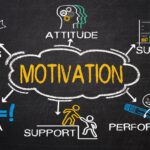The world is in a state of chaos. Everything that we know about how the world works has changed, seemingly overnight.
And that was before the COVID-19 pandemic shut down the world.
The fact is that our world is now far removed from the relatively steady and plodding Industrial Age landscape for which we built most of our operating structures, models, and processes.
The overnight shift to work from home (WFH) practices and virtual everything that the pandemic wrought merely accelerated trends that were already rearing their heads and slapping enterprise leaders in the face.
Long before this pandemic, disruption abounded. What had worked for generations was now inadequate. Tried-and-true playbooks suddenly failed to deliver.
The question facing organizations now even more urgently is how to rise to these challenges and rapidly adapt to meet them — especially when dealing with massive, dispersed, and often inertia-bound teams.
While the answer to that question is necessarily multifaceted, much of it comes down to two seemingly disparate components: culture and data.
The key to overcoming challenging times: improving your adaptation aptitude
At first glance, culture and data may appear odd bedfellows, particularly when we’re talking about creating an organizational ability to adapt to changing times.
The source of their compatibility — symbiosis, even — is found in the root of this disruption: a shift in value to the experience.
Across virtually every industry and every geography, organizations are finding that the nature of value creation has shifted from optimization to the delivery of a differentiated and “winning” customer experience — particularly one that is frictionless, contextual, and immersive.
Even within government, the sense that entities of the state are adequately serving their constituents’ experiential needs is becoming the defining factor in whether or not those constituents see them as effective and vote-worthy.
Creating these types of connected, immersive experiences, however, demands a wholesale remaking of how organizations function and structure themselves. After all, it’s unreasonable to expect organizations created around the need for efficiency and optimization to effectively serve such a starkly different purpose.
And, as any seasoned enterprise leader knows, you cannot begin to make a foundational change to the way an organization functions without first addressing its culture.
When it comes to transforming around the customer experience, however, shifting your culture is not enough.
The types of experiences that customers, constituents, employees, and, well, everyone, now expects also relies on something else: data.
We expect the organizations with which we interact to leverage our data responsibly to deliver an intuitive, contextual, and predictive experience. We don’t want to have to tell anyone anything — we expect them to know it already.
And so, culture and data have become the linchpins to an organization’s ability to adapt to the demands of the Digital Era. Together, an organization’s combined capabilities and proficiencies in rapidly transforming their culture and leveraging their data represent what I have come to call an organization’s adaption aptitude.
The burning question for enterprises, therefore, is how to improve it.
Building your adaptation aptitude through cultural transformation
Anyone who has ever had to lead even a modest transformation effort within a large organization knows that transforming the culture of a large, dispersed, and distributed organization is not easy.
The more expansive the effort and the larger the organization, the harder it becomes.
Yet, the type of cultural change that organizations require demands just this sort of transformation. So, what to do?
For answers, I turned to Matt Cutts, the administrator of the United States Digital Service (USDS), part of the Executive Office of the President of the United States. The USDS has a distinct mission: “to deliver better government services to the American people through technology and design.”
So a simple mission, right?
(BTW, a large part of the USDS’s mission is to attract the best and the brightest from the private sector and enlist their help to transform the federal government. If you’re interested in placing your skills in the service of our country — and we may never have had a greater need — you can do so here: usds.gov/apply)
In all seriousness, I wanted to know how he and his team managed to effect change across an organization as diverse and unwieldy as the United States federal government. He explained that the most critical thing was inviting the folks in the trenches — the career civil servants who had more knowledge of how the government worked in their pinky finger than you or I could ever imagine — to participate in the process.
“It’s [about] giving them [the team members in various units] permission,” he explained. “They haven’t been given permission to play with [new ideas]. They’re not invited to be a part of the process.”
This idea of inclusiveness and not pretending to have all the answers turned out to be the key to unleashing the creative potential of teams and driving cultural change. “We try to demystify this and make them a part of the process,” Cutts continued. “We bring them along on the journey. We don’t use consultant speak. We don’t pretend that we have magical skills.”
It’s shockingly simple, yet as Cutts explained, it was the key to nearly every success they had. “It’s doing things together. They’re on the tiger team with us,” he shared. “We’re not doing this to them; we’re doing this with them. We don’t run the demo, they do. They’re the subject matter experts. We’re seeing them transform and drive the transformation because of it.”
On the one hand, it was shockingly simple. But on the other, it lined up perfectly with what I had experienced in my own efforts. The more you help the people who must change, own the change, the more it becomes real.
What became clear after talking to Cutts and his team was that creating openness for cultural change through inclusiveness and an unabashed willingness to attempt the audacious was the essential first step.
But it was just that — the first step.
Knowing what to change by building a data infrastructure
It’s one thing to be able to drive cultural change across a vast organization. But that is only useful if you know what to change in the first place.
This understanding is an essential part of the USDS’s secret sauce. The team’s mantra is to “make the user unavoidable.” This phrase is essentially their version of a call-to-arms around user-centric or customer-centric design.
And central to that edict is the use of data.
In one example, a USDS unit led by Clare Martorana (who is now the CIO at the U.S. Office of Personnel Management) helped the team at the Veteran’s Administration do a revamp of their website, and the way veterans access services through it. The net result was a massive increase in service requests and usage — merely because the teams used data and this user-centric design approach to pivot the website around the veterans themselves.
The challenge, of course, is that to take a data-driven and customer-centric approach to guiding your transformational efforts, you need to have quality data to inform these choices in the first place.
However, many organizations struggle with this vital piece of the puzzle because they have failed to build the type of data infrastructure they need to do so.
“We believe that it’s not just data, that is the currency, it’s operational data, and it’s operational data used well,” shared Peter Guagenti, chief marketing officer with MemSQL. “It’s not enough to have it; you have to know how to work with it. And we believe the real innovators in every industry are those who are able to leverage the data to competitive advantage.”
Even as organizations begin to go down the data-driven road, however, they run into obstacles. “Organizations are increasingly leveraging real-time streaming data at scale to support applications [in many vertical industries], but managing these apps is very difficult as their complex architecture includes many moving parts, and they’re constantly ingesting massive volumes of data,” explained Kunal Agarwal, CEO of Unravel Data. “Manually troubleshooting these data apps is slow and requires Ph.D.-level expertise. Enterprises are realizing that manually managing these widely deployed data apps is not tenable, so they’re turning to AI-driven DataOps platforms to help.”
It is becoming unquestionably clear, therefore, that building and sustaining these types of data infrastructures is an essential part of solving the puzzle and rising to these challenges.
A possibility-driven future
It is at the intersection of these two capabilities that organizations are finding their adaptation aptitude.
When you can build a data infrastructure that enables you to harness operational data at-scale, and then apply it in a customer-centric manner, you set yourself up for transformation success. You find clarity in what needs to change, you gain insights on how to change it, and most critically, set yourself up to create trust with both your employees and your customers as you go through the process.
“The customer experience can be a true competitive advantage in the private sector, and people are just now realizing how much it matters [when it comes to] trust in government,” extolled Cutts. “Government has to serve everyone. So if you care about trust in one of society’s biggest institutions — the government — then you want those customer interactions to be just as smooth and seamless as they are in the private sector.”
Long before the COVID-19 pandemic struck, the world was already in the midst of a fundamental shift that would forever change the way organizations function. The crisis, however, has both accelerated the change and made it all that more urgent.
In both the private and public sectors, enterprise leaders must rise to this challenge and drive lasting, fundamental change within their inertia-bound organizations.
Doing so will demand that they embrace these two seemingly unrelated tools and focus on building their adaptation aptitude.
Building a dynamic data infrastructure will provide insights into customers and constituents and help you remain connected to their changing needs and desires.
This data on its own, however, is of only limited value. To unleash its true potential, you must place it in the service of broader organizational and cultural change by leveraging it in the context of a customer-centered transformational effort.
It is only by doing so that you will ultimately build an organizational capability that will enable you to examine all possibilities without constraint and create a lasting trust with and between your team and your customers so that you can rise to today’s challenges together.
Tag/s:Business TransformationCOVID-19CreativityDigital DisruptionFuture of WorkNew Normal





